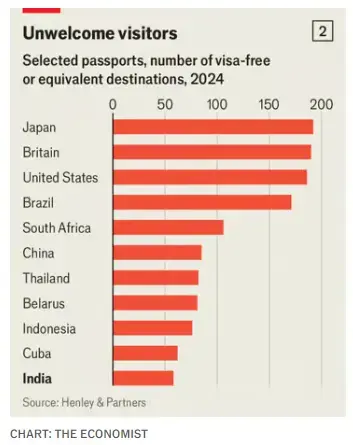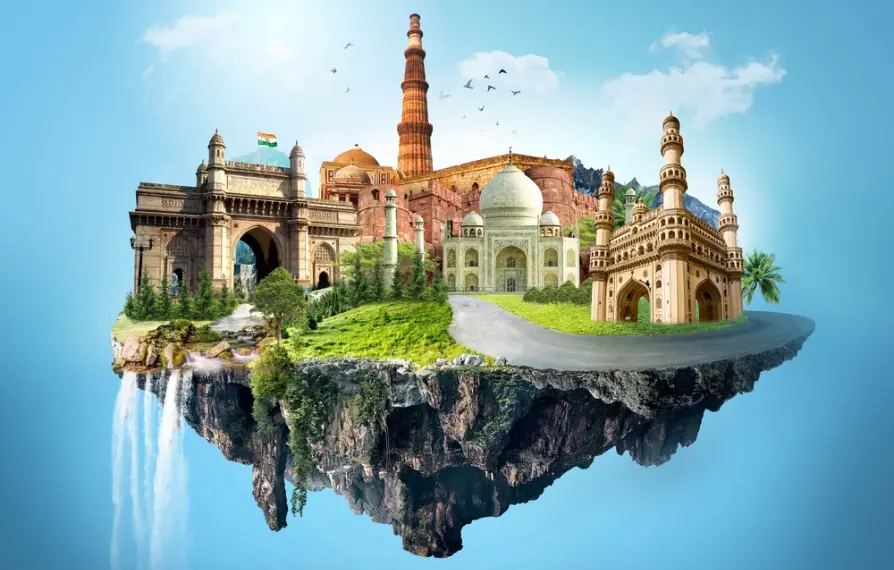Indian Tourists Are Conquering The World
Friday night at Indian Express is, without a doubt, a sensory extravaganza. People from every part of India come together to enjoy wonderful servings of kebabs and curries. Kingfisher beer is clinking from glass to glass against the soothing Bollywood tunes. Just a stone's throw away, Radha Krishna is equally buoyant with a vegetarian fare. This is the celebration of Indian cuisine, not in Delhi or Mumbai but in Bangkok.
India's economic growth has lifted millions out of poverty and solidified its global standing. However, less has been said about how the burgeoning middle class in India is creating ripples in the international markets. With international departures overtaking 27 million in 2019 from just above half of that a decade prior, Indians went abroad like never before. Expenditure by Indian tourists overseas has also skyrocketed, reaching $33 billion in 2023 and projected to touch $45 billion by next year. This surge is driven by demographic transitions and economic growth: a sizeable section of the population entering prime travel age and the middle class projected to double by the year 2047. The issuance of Indian passports captures the same trend, having almost doubled during the last decade.
According to McKinsey, by 2040, there will be nearly 90 million outbound travelers in India, thus starting to approach earlier high numbers for Chinese tourists. Earlier trends favored European destinations for the Chinese, whereas Indian tourists today largely favor neighboring destinations, seeing a significant increase in arrivals.
As China was once at the forefront of global tourism, Western countries changed their visa granting processes to expedite welcoming Chinese travelers, yet have lagged in their efforts toward the Indian market. Middle-Eastern and South-East Asian countries, on the other hand, have been quite pro-active, with Thailand and Malaysia amending visa regimes for Indian travelers. These destinations have also inducted Bollywood stars as brand ambassadors with an understanding of reaping not only economic benefits but also inducing potential soft power as well.

Indian tourists have been a major draw for South-East Asian countries, and many countries are upgrading these efforts in the light of loss from tourism from China. For instance, Thailand clearly registered a dip in the number of Chinese tourists, and the number of Indian tourists coming to Thailand has risen sufficiently to equal that total in under six months in 2024 as compared to ten years ago. Last year, India's contribution to Thailand's tourism revenue significantly touched the country's GDP.
Thailand is cheap, closer yet, and friendly for Indians. Hence, although a lot more, the travel became very easy because of the visa requirements relaxed resulting in increased Indian travel. Other nations include Iran and Kenya, which have raised their travel count from India significantly.

Conversely, Western nations have made it challenging for Indians to obtain tourist visas, with lengthy waiting times and high fees. The cumbersome process and high rejection rates have deterred many Indian travelers, who instead prefer the simplicity of traveling to South-East Asia. The disparity in visa policies is costing these Western countries valuable tourist revenue and opportunities to build cultural bridges.
The ease of travel is further facilitated by the increase in direct flights from India to various international destinations. The expansion of flight routes by Indian airlines has significantly boosted tourism, with new direct flights leading to sharp increases in Indian tourists to countries like Turkey and Uzbekistan.
Cost considerations also play a crucial role in travel decisions. With India itself becoming more expensive, destinations offering value for money, like Thailand during peak seasons, are particularly attractive. The growing affluence in India suggests that more Indians will have disposable income for travel in the coming years.
Lastly, cultural considerations, such as the availability of Indian cuisine, particularly vegetarian options, are paramount for many Indian tourists. The lack of Indian food can be a drawback, as seen by a Mumbai pharmacist who, despite enjoying his trip to Azerbaijan, noted the scarcity of Indian dining options.
While some Western countries may not mind fewer Indian tourists due to concerns about overtourism, they overlook the broader cultural and economic implications. Tourism not only enhances economic ties but also fosters cultural understanding and global connectivity. Countries that successfully attract Indian tourists are poised to influence future cultural perceptions and alliances, with South-East Asia and the Middle East currently leading the way, while America and Europe risk missing out on these opportunities.





